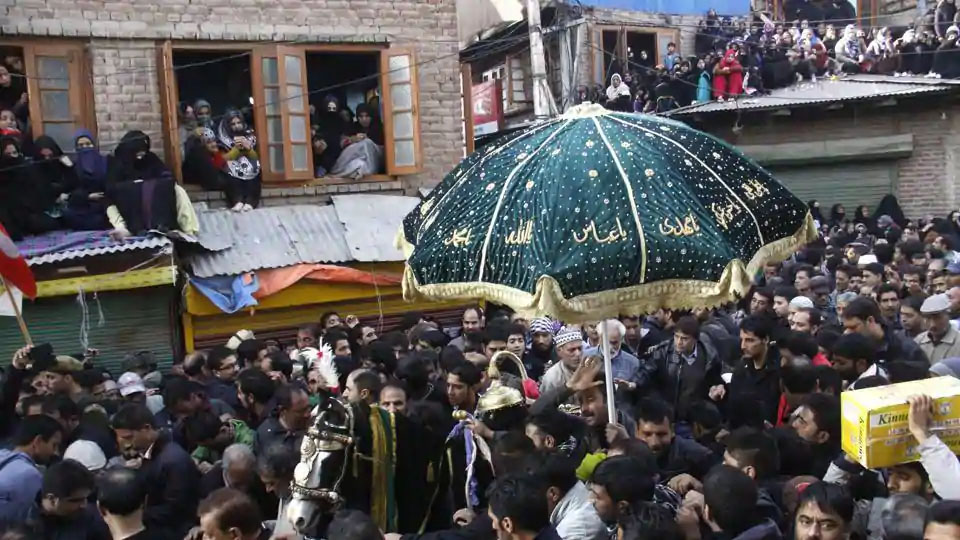
The ceremonies held during Muharram, year after year, reinforce integrity and resilience in the face of oppression
Mehak Fatima
KARBALA, literally the land of karb (sorrow) and bala (agony) has over time turned into a metaphor — one for catastrophe, and one for resistance. It was on this land that Hussain ibn Ali, the grandson of the Prophet Muhammad (peace be upon him) was martyred alongside seventy-one companions. Hussain and his companions made the ultimate sacrifice by standing in the face of tyranny, injustice, and corruption, and keeping alive the values of truth, justice, and dignity.
“Hayhat minna al zilla!” (never to humiliation!) – the flame of resistance was sparked by Hussain ibn Ali’s refusal to pledge allegiance to the tyrant, Yazeed, with these words. Hayhat minna al zilla! – chant mourners in processions paying homage to the martyrs of Karbala.
The month of Muharram marks the beginning of the Islamic year, however, for the followers of the Shi’a school of thought, Muharram ushers in a religious fervour accompanied by grief and passion. The first nine days of the month of Muharram have, for the longest time, been observed and commemorated with mourning ceremonies across the globe, leading up to the tenth day or Ashura (Arabic for ‘tenth’), which marks the martyrdom anniversary of Imam Hussain and his faithful companions.
Black banners and flags atop buildings and houses betoken the onset of Muharram in Kashmir. Mourning rituals, including majalis (lecture gatherings), juloos (processions), nawhakhwani (lamentation poems), and marsiyakhwani (elegies), begin to be observed. These rituals are pronounced with expression of grief over the tragedies that befell the Prophet’s family by lamenting and beating of chests.
Juloos or processions in earlier times were taken out in the wee hours of the night. Ceremonies were largely private and held indoors or within maatam sarais (mourning houses). The eighth and tenth of Muharram would usually be devoted to alam (flag) and zuljinah (Imam Hussain’s horse in Karbala) processions respectively. Overtime, the rituals moved outdoors in daylight, with male mourners lining streets in groups – some beating chests, some self-flagellating – while women lined the boundaries and buildings beating their chests to the rhythm of the nawhas.
Public observation of Muharram in Kashmir has long undergone notable changes. From night-time processions to mourners being detained and lathi-charged, the socio-political milieu in Kashmir over the centuries has substantially shaped Muharram into a glaring symbol of resistance. Noted poet, Agha Shahid Ali, explored his Kashmiri Muslim identity in many of his works as he drew parallels between Karbala and Kashmir, adding a distinctive facet to resistance poetry.
“ ‘Break their hands.’ Will ours return with guns, or a bouquet?
Ice hardens its fat near his heart. We’re cut to the brains.
He memorizes, clause by clause, the contract for Doomsday.
We mourn the martyrs of Karbala, our skins torn with chains.
The Mansion is white, lit up with roses. He is driven
Through streets in which blood flows like Husain’s.
Our hands won’t return to us, not even mutilated, when
Death comes — thin bureaucrat — from the plains.”
— Agha Shahid Ali (Muharram in Srinagar, 1992)
The ceremonies held during Muharram, year after year, serve as a reminder and a source for drawing lessons from lives of Karbala’s martyrs, reinforcing integrity and sustaining resilience in the face of oppression. This period comes for every individual as an opportunity to reflect upon how one can, in their own capacities, answer Hussain’s echoing call from the grounds of Karbala – “hal min nasirin yansurna?” (is there anyone to come to my aid). The answer to this call for support does not lie in physical presence and strength, but it is a call to rise up against injustice in every form, to make Hussain’s cause one’s own, and stand firm for the truth. Observers of Muharram in Kashmir continue to strive in this direction and live by the saying, “kullu yawmin Ashura, kullu ardhin Karbala” – “every day is Ashura, every land is Karbala.”
- Mehak Fatima is a postgraduate in English from the University of Delhi and is currently pursuing her Bachelor’s in Education from IASE, Srinagar
Follow this link to join our WhatsApp group: Join Now
Be Part of Quality Journalism |
Quality journalism takes a lot of time, money and hard work to produce and despite all the hardships we still do it. Our reporters and editors are working overtime in Kashmir and beyond to cover what you care about, break big stories, and expose injustices that can change lives. Today more people are reading Kashmir Observer than ever, but only a handful are paying while advertising revenues are falling fast. |
| ACT NOW |
| MONTHLY | Rs 100 | |
| YEARLY | Rs 1000 | |
| LIFETIME | Rs 10000 | |













